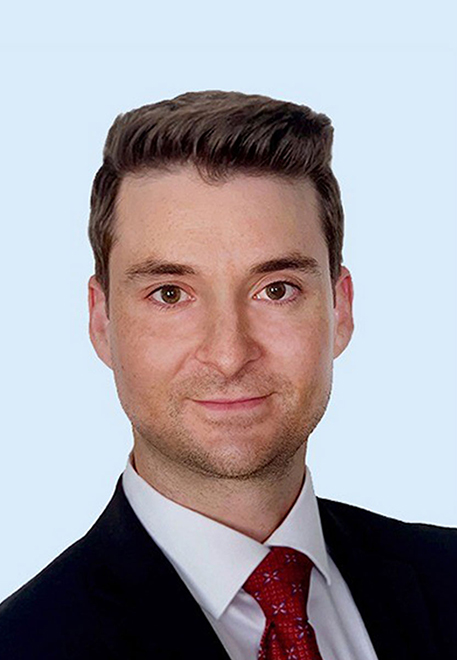- PATIENT FORMS | REQUEST A CONSULTATION | CONTACT US
- 1-844-NSPC-DOC
Surgical Correction of Thoracolumbar Kyphoscoliosis Deformity
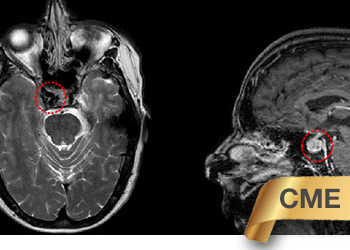
Direct Carotid Cavernous Fistula (CCF)
October 26, 2021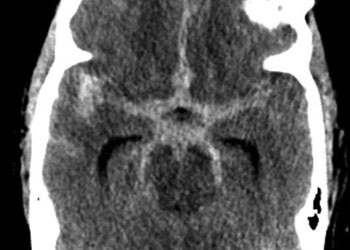
Sudden Coma While Receiving Physical Therapy
October 26, 2021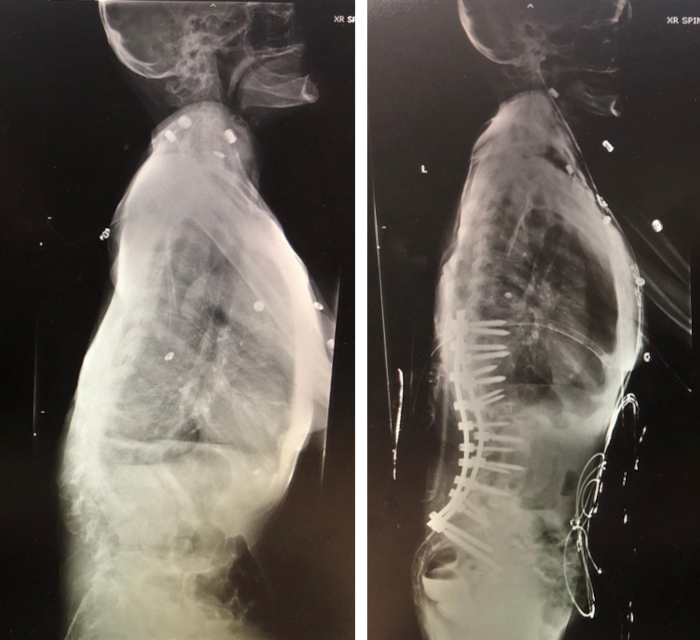
This is a 70-year-old female who has been suffering from progressively worsening back pain for the past decade. She developed a kyphoscoliosis deformity as a result of osteoarthritis and osteopenia consequently causing wedge compressions and lateral spondylolisthesis. She had a very complex spinal deformity in addition to tobacco use, poor bone quality and being malnourished. She also developed painful hip and knee arthritis as a result of compensatory mechanisms to maintain herself upright. She was no longer able to stand without external support and her ambulation was limited to a few feet. She underwent an extensive amount of therapy, bracing, pharmacologic regimen, and multiple pain interventions without any improvement. She has been turned down by prior neurosurgeons and orthopedic spine surgeons, who told her that she was not a surgical candidate given her complexity.
Fortunately, she later met with Dr. Xavier Gaudin who has expertise in the field of scoliosis and spinal deformity. Dr. Gaudin was determined to bring her life back and had a comprehensive treatment plan for her condition. Prior to considering any surgery, she required thorough medical optimization. She began taking Forteo (Teriparatide), a parathyroid hormone to promote bone growth to help her anticipated spinal reconstruction and healing. Additionally, she was started on a nutrition and iron supplementation, and Chantix (Veranicline) for smoking cessation. Following four months of effective optimization, she underwent a T10 to iliac posterior instrumented fusion with L1-2, L2-3 and L3-4 posterior column osteotomies and reduction of her kyphoscoliosis. After uneventful recovery and therapy, she is now able to ambulate fully unassisted and has an increase 7 inches in body height from her spinal reconstruction. She reports her back pain being much improved without requiring any pain medicine, and complete relief of her hip and knee pain. Her postoperative x-rays demonstrated a newly balanced spinopelvic alignment and reduction of her scoliosis curve by greater than 50%. She is to this day fully independent and able to enjoy walks in the park with her grandchildren. The surgery was life changing and brought tears to her eyes.
Adult spinal deformity is an out of alignment spinal curvature that results most commonly from degenerative arthritis and osteopenia, although other etiologies include trauma, infection, and malignancy. Consequently, the spinal alignment becomes imbalance requiring increase energy expenditure to maintain an upright posture. The body has several mechanisms for which it compensates for spinal malalignment, including exaggerated cervical lordosis, thoracic hypokyphosis, extension of the pelvis, and flexion of the knees. These mechanisms require additional musculature and creates stress on the joints, causing pain, fatigue, and disability. With newly developed instrumentations and expertise, we are now able to accomplish spinal realignment surgery with less morbidity then previously. These techniques include anterior and lateral approaches to address the anterior column for the spine and minimally invasive techniques when appropriate. Using a two-surgeon approach to diminish intraoperative time along with these latest techniques significantly reduces complications and allows patients to get their life back in a much safer manner.
CATEGORY: SPINE // SURGICAL CORRECTION OF THORACOLUMBAR KYPHOSCOLIOSIS DEFORMITY
Surgical Correction of Thoracolumbar Kyphoscoliosis Deformity
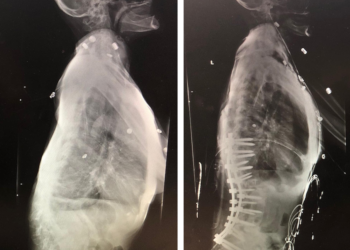
Authors
To learn more about the author, click his name or photo:

